What Is the Login Keychain Password & How to Access It
It's quite necessary to keep our passwords secure. One important aspect of password management on Apple devices is the login keychain password. This post aims to give a comprehensive overview of a login keychain password. By understanding and managing your login keychain password effectively, you can ensure enhanced security and ease of use across your Apple devices.
In this article:
Part 1. An Introduction to Login Keychain
The keychain is a crucial component of Apple's password management system. It is available on Apple devices and helps users securely store and manage their passwords, certificates, private keys, and other sensitive information. The login keychain is the system keychain that is automatically unlocked when users log into their Mac or iPhone, allowing seamless access to stored passwords. It acts as a virtual vault, safeguarding data and providing convenience for users by automatically filling in passwords and other credentials when needed.
As we can tell from its name, the login keychain password is created when users set up their Mac and create the login password for the first time. Therefore, the login keychain password is the same as your Mac login password by default.
Part 2. Change Login Keychain Password
As we mentioned before, the login keychain password is the same as your Mac login password, and the login keychain will be automatically unlocked when you log in to your Mac.
However, there are exceptions – if you change your Mac login password, the login keychain password won't be synced, so it won't be unlocked when you log in to your Mac. Or, if you once changed the default login password, it will be the same case.
You can follow the guide to change your login keychain password:
Change Login Password If You Know the Current One
Open the Keychain Access app on your Mac. You can find it in the Utilities folder within the Applications folder. Click the Finder button on your Mac's dock. Open the Applications folder, followed by the Utilities folder.
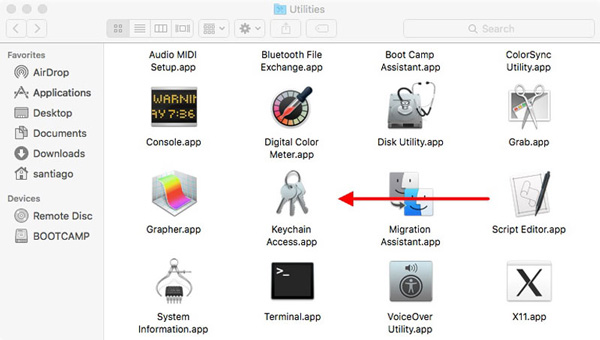
Choose Keychain Access in the menu bar and click Preferences. Type login in the search field on the top right. Double-click the login keychain that appears in the list.
Click the Show password checkbox and enter your Mac user account password when prompted. The password for the login keychain will now be displayed in the password column.
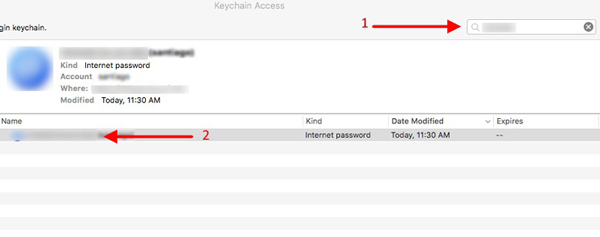
To change your MacBook login keychain password, go to Preferences from the Keychain Access menu, then select the Reset My Default Keychain option. Follow the prompts to proceed.
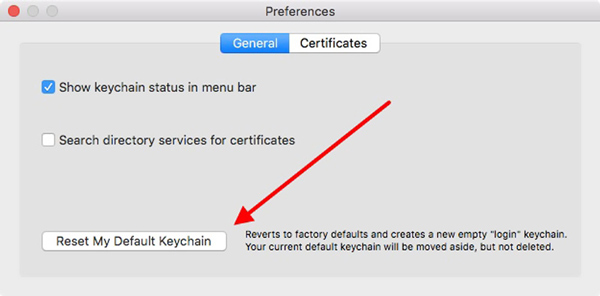
Please note that changing your keychain password might require entering the new password when accessing certain stored information, such as saved passwords or secure notes.
Change Login Password If You Forget the Current One
If you forget the current login keychain password, you can't check the login keychain anywhere since Apple doesn't store it. The only solution is to reset the password, and previously saved passwords will be lost.
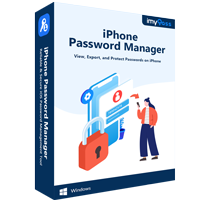
4,000,000+ Downloads
Extract all iPhone passwords saved in the login keychain to an Excel spreadsheet.
Scan all passwords on your iPhone, like Wifi, ScreenTime, and Apple ID.
Manage and view all passwords on your iPhone.
Support the latest iPhone 16.
Open Keychain Access app in the Applications folder or search for it in the top-right corner of your Mac screen.
Click Keychain Access on the top and choose Preferences.
Click Reset My Default Keychain. This option will create a new default login keychain; the old one will be disabled until you remember the password.
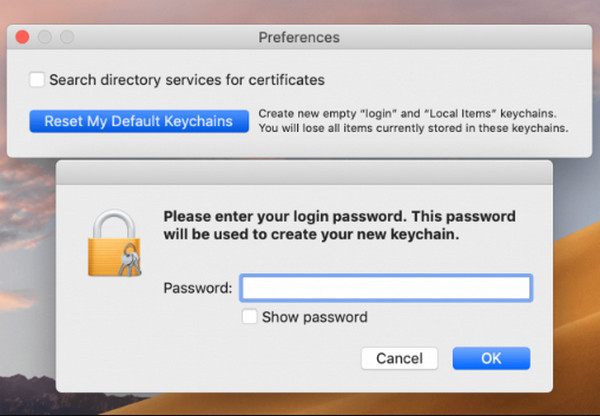
FAQs.
-
How can I turn on iCloud Keychain on my iPhone?
To turn on iCloud Keychain on your iPhone, go to Settings, tap your name on the top, then choose iCloud. Scroll down to locate the Keychain option and toggle iCloud Keychain on.
-
How to secure the login keychain password?
Use a strong, unique login keychain password that is not easily guessable. Regularly update your login keychain password to ensure maximum security. Enable two-factor authentication for enhanced login keychain protection. Avoid sharing your login keychain password with anyone. Use a password manager app to store passwords securely.
-
How do you find your stored Safari passwords on a Mac?
To check your stored Safari passwords, open the Safari app, click the Safari menu, then select the Preferences option. Choose Passwords and enter your current password. Now you can click the specific website to view its passcode.
Conclusion
The login keychain password plays a vital role in password management on Mac, iPhone, and iPad devices. After reading this page, we hope you can take control of your passwords, ensuring a balance between convenience and security.
Hot Solutions
-
Unlock iOS
- Review of the Free iCloud Unlock Services
- Bypass iCloud Activation With IMEI
- Remove Mosyle MDM from iPhone & iPad
- Remove support.apple.com/iphone/passcode
- Review of Checkra1n iCloud Bypass
- Bypass iPhone Lock Screen Passcode
- How to Jailbreak iPhone
- Unlock iPhone Without Computer
- Bypass iPhone Locked to Owner
- Factory Reset iPhone Without Apple ID Password
-
iOS Tips
-
Unlock Android
-
Windows Password

